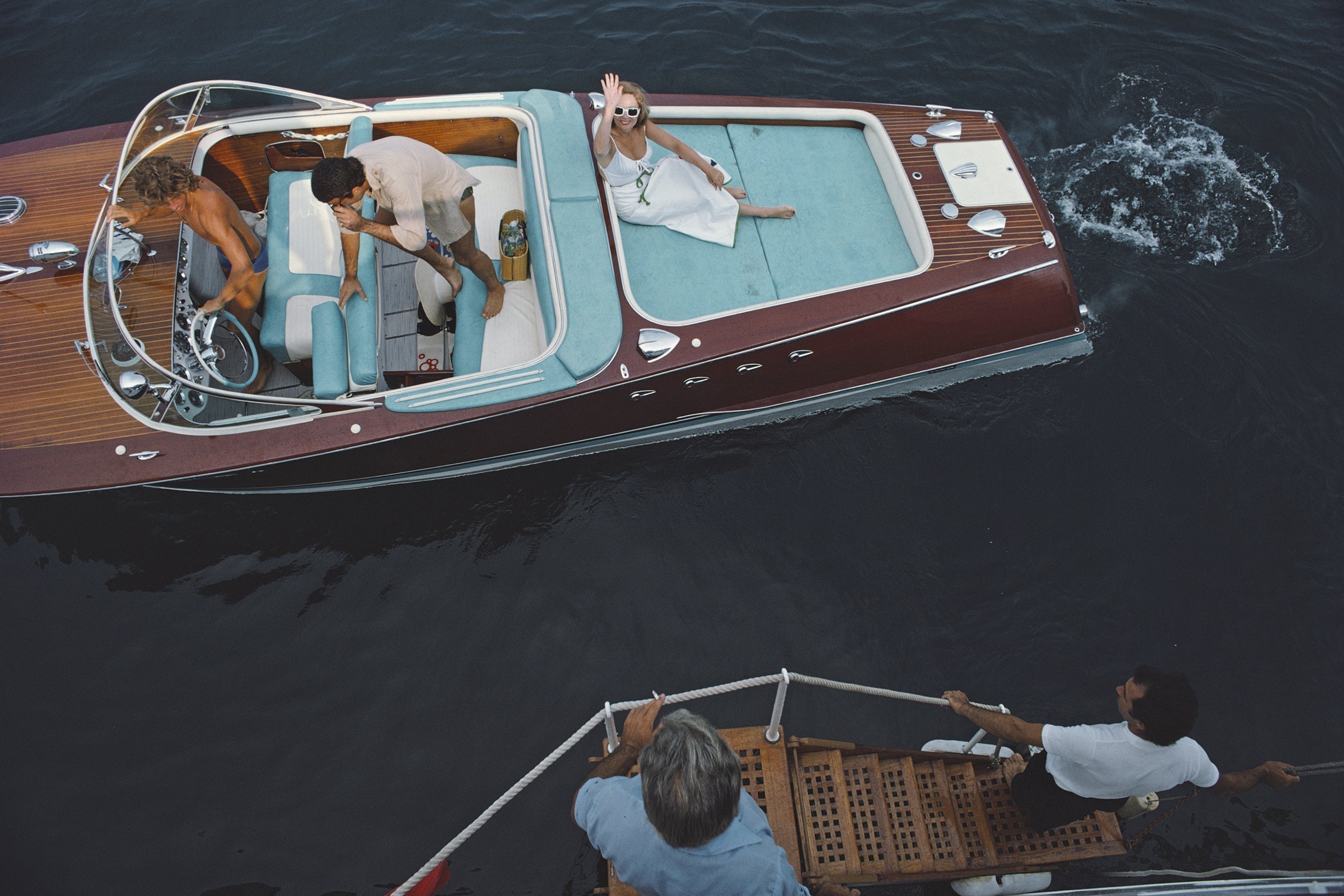The Photographer Who Captured Privilege Without Pretension
Slim Aarons

Slim Aarons
There are few names in twentieth-century photography as instantly recognizable as Slim Aarons. For over three decades, he turned his lens toward the lives of the well-connected and well-dressed, documenting a version of leisure that continues to shape how we view luxury, travel, and aspiration today. But Aarons' work is more than beautiful people in beautiful places. It is a study in balance, access, and restraint. His photographs have never asked to be cool. They simply are.
At Sonic Editions, Slim Aarons remains one of the most collected photographers in our archive. Interior designers, art buyers, and collectors return to his work again and again not for trend, but for timelessness. These are the prints that live well. That set a tone. That hold a room.
This is not about nostalgia. It is about permanence. And Aarons captured it better than anyone.
Who Was Slim Aarons?
Born George Allen Aarons in 1916, he served as a combat photographer during World War II before deciding to turn his focus toward something quieter. After witnessing war firsthand, Aarons made a personal and professional decision to photograph only what he called “attractive people doing attractive things in attractive places.” He meant it quite literally.
What followed was a body of work that became synonymous with a particular kind of post-war elegance. From ski resorts in Gstaad to villas in Capri, from Palm Beach to Palm Springs, Aarons found himself inside the worlds of those who shaped culture without necessarily chasing it. He had access, but he did not intrude. He composed, but he did not interfere.
His work was published widely in Harper’s Bazaar, Town & Country, and Holiday magazine. But it was never just fashion or editorial. It was lifestyle in its purest form, captured by someone who understood both light and distance. Aarons rarely used artificial lighting. He believed the scene was already good enough.
What makes his work so enduring is not the obvious glamour. It is the balance. The clarity. The exactness. His compositions are often simple, but they are never accidental. Every towel, every limb, every shadow falls where it should. There is nothing careless in these moments, and yet they never feel forced. Aarons made the aspirational seem achievable, but never ordinary.
Why His Work Still Resonates
In an era defined by oversharing and artificial curation, Slim Aarons' photographs feel like an antidote. They do not scream. They do not perform. They do not sell you anything. They show you how a moment can hold power without explanation.
Aarons had the unique ability to make wealth look weightless. He photographed his subjects not as celebrities or clients, but as elements of a larger composition. They are not the focus. They are part of the frame.
Today, his work serves as a visual shorthand for timeless taste. It is no coincidence that his prints appear in homes with carefully edited bookshelves and Brutalist coffee tables. Designers know the power of his restraint. Collectors know the value of his perspective. And Sonic Editions clients return to his work for the atmosphere it creates.
A Slim Aarons print is more than decoration. It is a decision. One that says you understand balance. That you value history. That you are not interested in the obvious.
Five Prints That Define the Slim Aarons Eye
Below are five of our most collected Slim Aarons prints. Each one reflects a different facet of his style and subject matter. Together, they offer a visual portfolio of what made his work essential—and why it continues to live on walls around the world.
Pool Hotel du Cap Eden-Roc
This is one of Aarons’ most iconic compositions. Shot in Antibes on the French Riviera, the scene is impossibly elegant without ever feeling posed. The pool cuts through the frame like a corridor, flanked by white umbrellas and sunlit swimmers. There is no urgency, only rhythm. This is summer as it was meant to be experienced.
Conca dei Marini
Unpopulated but not empty, this image offers a different take on Aarons’ aesthetic. No people, no fashion, just clean shapes and open water. The Amalfi coastline becomes sculpture. This is a perfect example of how Aarons knew when to let the environment speak louder than its inhabitants.
Sailing Dinghy
Shot in San Diego, this photograph is deceptively simple. Boys pull a boat to shore. But the geometry is precise. The shadows are long. The energy is just restrained enough to feel permanent. It reads like a memory, but one that exists outside of your own life. That is the genius of Aarons.
Sunbathing in Arizona
A study in minimalism and contrast, this desert scene strips away all distractions. A woman reclines in bright light. Her shadow cuts across the stone. The image is quiet, but never empty. It shows that Aarons’ work could be just as impactful in silence as in social settings.
Life in the Bahamas
This print captures the kind of leisure that most people spend their lives imagining. There is no performance here. Just color, texture, balance. Aarons had a way of making paradise feel both elevated and grounded. This is that skill at its peak.
Framed for a Reason
Sonic Editions exists to bring iconic photography to people who understand the difference between images and art. We offer Slim Aarons’ work in gallery-quality prints, framed by hand, made to live in spaces that reflect quiet intention. These are not posters. These are photographs with legacy.
Each print comes in a range of sizes and finishes to suit your space. Whether you are curating a gallery wall or anchoring a room with one dominant image, Aarons offers range and clarity. His work fits interiors where everything has purpose.
Final Word
Slim Aarons did not change the world. He chose to document a corner of it that most people never saw. And in doing so, he left behind a body of work that continues to define what visual restraint and editorial elegance can look like.
His images belong on your walls not because they are famous, but because they are composed. They do not shout. They do not rush. They hold space.
And in a world that moves faster every day, that might be exactly what your home needs.









